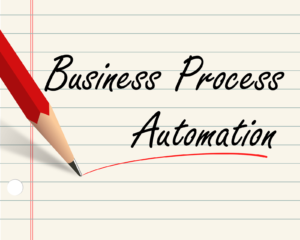How to Successfully Introduce Document Automation to Your Firm
 Time is money. This is true, especially in today’s business world. Technology keeps developing new ways to get work done and one must keep up with the times. You can make your firm processes more efficient and less cumbersome by automating tasks.
Time is money. This is true, especially in today’s business world. Technology keeps developing new ways to get work done and one must keep up with the times. You can make your firm processes more efficient and less cumbersome by automating tasks.
Repetitive tasks such as form-filling and correspondence may only take a few minutes. These minutes accumulate and add up to hours. Not only can this time be saved, but the work can be made easier and less tedious with document automation.
What Is Document Automation?
Document automation uses technology to ease the creating and drafting of documents. Most of these documentation tasks are usually repetitive and tedious. Staff spend long hours typing information into computers or sending product information emails. These tasks can be automated.
The specialized software presents users with standardized forms where they enter relevant data. This data is then entered into a template, which is then used to create a document. An automated document system creates a centralized repository for your documents. This increases speed and efficiency. It also reduces the chances of errors, duplication, and clutter.
So the question stands: should I use document automation? If I do, where do I begin?
Start Small
Identify processes that are endlessly repetitive and start with those. Automate the easy processes first. It is important to thoroughly document the processes before making any changes. This not only serves as a record in case you have to undo the changes but also helps you plan the automation.
Documenting processes helps you identify what to automate and plan for it. It also helps you estimate costs and potential benefits. You are thus able to rank processes according to urgency.
Step by Step
While it may be tempting to jump right in and automate your entire operation, it is wiser to do so in stages. Identify processes where automating will not have a disruptive impact and start there.
In this way, you learn more about your firm and the automation process. It also makes it easier to adjust the strategy and process as you go along. When the time comes to make major changes, you will also have the experience to call upon.
Involve Everyone
Involve the people who are likely to benefit the most. People resist change and they will cooperate more if they feel they are part of the process. Invest in training and make sure everyone’s on the same page. After all, the automation is for the benefit of the people in the firm.
When everyone knows how they will gain from the automation, they are more motivated to take part. They are also more likely to come up with useful ideas on which processes to automate and how to go about it. Automating tasks like data entry and routine correspondence frees up time. People can concentrate on more important things such as business strategy.
Planning Ahead
Architects first draw a plan of a building before the ground is broken. You also need a clear plan before you start automating your documents. Identify the processes that could benefit most from automation. Work your way backward from there.
With this knowledge, you will be in a position to make informed decisions. Set time and cost targets. This makes the process clear to everyone involved. Assign a team to test and install the solutions. This team can eventually become a new department in your firm as you grow.
Finding the Right Tool
There are many ready-made document automating software packages available off-the-shelf. Identifying the right one is important. Test a few before making the decision to invest in one.
Launching the automation process with the wrong software could cost you in the long run. A system that ends up complicating tasks and is not user-friendly would be a liability. Get expert advice.
Look to the Future
Where do you see your firmin three to five years? It is important to keep this in mind when initiating the automation process. Automating in stages helps you plan for the future and makes it easier to keep track of changes.
Setting targets based on a long-term vision makes it easier to see the bigger picture. It also makes it easier to adjust your strategy in case of unforeseen circumstances. Find a system that has the flexibility and adaptability to grow with your firm.
Is Automating Worth It?
How much will automating your documents cost in time and money? How much will you save in the long run? Will automating provide a good return on investment? These are questions you should answer before you begin. Look at the big picture.
Identify the processes where automating will provide the best value and start there. This also helps the people involved see the benefits. For example, it might give your lawyers time to focus on clients instead of paperwork.
Security
Any automated system is vulnerable to hacking. Consider this when choosing and implementing your system. While automating makes things easier and quicker for you, it can also open you up to malicious damage. The system stores important information on all aspects of your firm.
Financial information and customer contacts should be safe from unauthorized users. Invest in a system that takes security seriously, from a trusted vendor.
Quality Control
You should subject your automation process to thorough quality control standards. Treat it like you would a product you are manufacturing. In the early stages, all computer processes will have bugs – nothing starts out perfect.
You can avoid the negative effects these bugs can cause by being vigilant. The system needs close monitoring and fine-tuning for the benefits to be fully gained from it.
Document Automation In Law
Automation is everywhere these days. Modern firms are implementing automation on a large scale and it wouldn’t do to be left behind. From sending routine emails to setting appointments, there is no getting away from it. Implemented properly with good planning automating your documents saves time and money.
People are freed up to perform more important tasks. Personal interaction goes up and the staff is more motivated. Management is able to access information and make decisions faster. In the long run, automation more than pays for itself by helping your firm grow. If your law firm needs to become more efficient, look into document automation.



